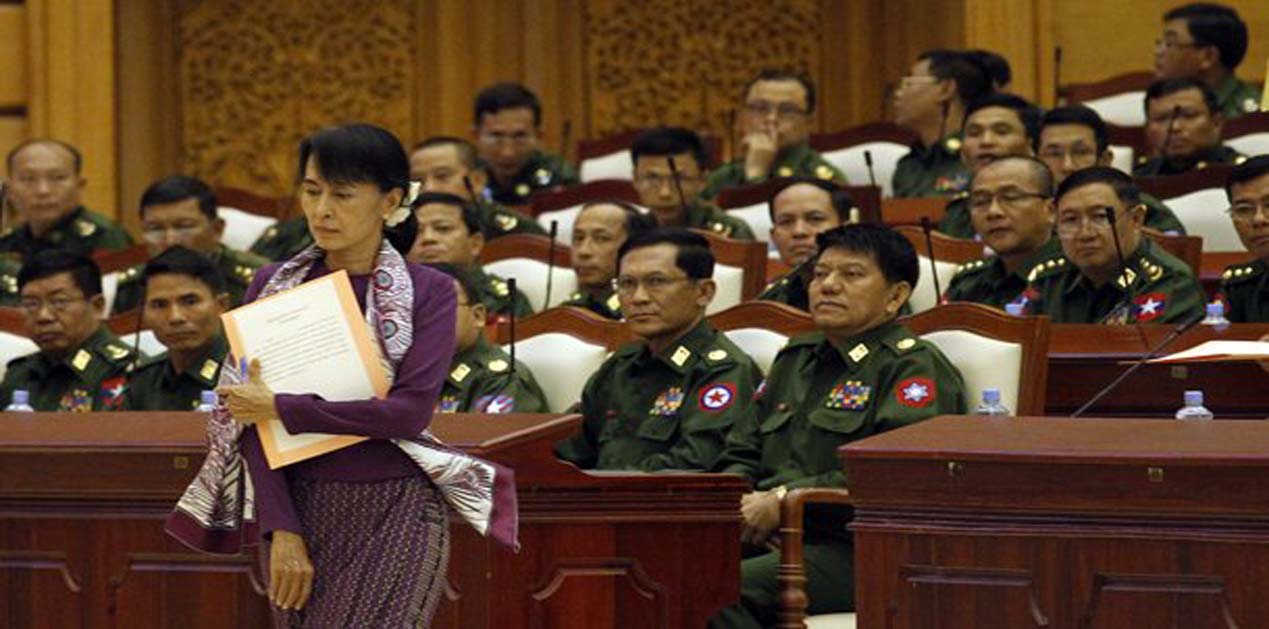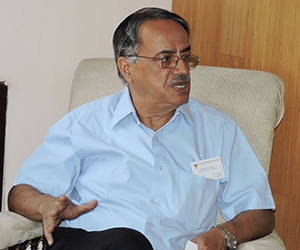Myanmar’s quasi democratic government has completed over half of its constitutionally mandated term but has to yet make a major progress in a number of areas, especially those related to political and economic reforms. While the peace and reconciliation process is making some progress but it is moving at a snail’s pace. The Rohingya crisis and Aung San Suu Kyi’s tepid response to it has made the Western countries pull back their support to Myanmar both politically and economically. This has led to China bouncing back in Myanmar by increasing its geo-political and economic presence.
So what are the portents for the year 2019? Some of the recent internal and external developments on Myanmar’s political firmament indicates the shape of things to come in the current year.
At the political level, National League for Democracy led by Aung San Suu Kyi lost five seats out of six in the ethnic areas in the by elections held in November 2018. While this might have little effect on the outcome of general elections due in 2020, yet it indicates that ethnic population might not be happy with the pace of ongoing peace process. Suu Kyi has made the peace process as a priority task with the target of concluding it before the general elections in 2020.
Passage of political and economic reforms is adversely impacted by the nature of power sharing structure as 25 percent of seats in both lower and upper houses are earmarked for the military. Therefore, any kind of amendment to the existing Constitution of 2008 drafted by the military remains a farfetched dream as three fourth majority is required for such a purpose. It is also given that the Union Solidarity and Development Party (USDP), known to be the Army’s party, would continue to get some odd percentage of votes and thus would contribute to nullifying any amendments that challenge Myanmar military’s power in any way. In August 2018, during a visit to Singapore Suu Kyi had observed that “The amendment of the constitution was one of the goals of our government - The completion of our democratic transition must necessarily involve the completion of a truly democratic constitution.” It seems unlikely that the Constitution would be amended either in the current year or next year.
Though, it can also be said that Myanmar’s civilian government has shown some spunk by announcing its plans to take over the General Administration Department (GAD, it is part of Ministry of Home Affairs being run by the military) which is an important department that the military is not in favour of handing over the control of civil government. The GAD controls the Myanmar Civil Service which in turn exercises control of administrative functions down to the ward and village level. This could be a harbinger for intensification of skirmishes between the civilian government and Myanmar military in the coming days.
Another question that begs an answer is how far would peace process progress in the year 2019 or for that up to 2020 when the next general elections are due? Apparently, there is a triangular, nay quadrangular, relationship developing between the Myanmar military (Tatmadaw), civil government of Aung San Suu Kyi (ASSK), Ethnic Armed Organizations/Groups (EAO) and of course, China. While ASSK has been keen to take Tatmadaw along in its negotiations with the EAOs she has also been receptive to China’s attempts at bringing some of the EAO’s, especially the Northern Alliance, to the negotiating table, i.e. for the 21st Century Panglong Conference.
Further, China never being the one to forego any opportunity to enlarge its influence in the neighbourhood or for that matter anywhere in the globe, has been playing its own games with the EAO’s and Myanmar. Beijing has been using the EAOs as leverages to seek more strategic and economic concessions from Myanmar. Recently, China’s ambassador to Myanmar travelled to Kachin State’s capital Myitkyina and warned the local political leaders and groups not to protest against construction of suspended Chinese hydro-power project of Myitsone as also to desist from striking close friendships with the Western diplomats. Evidently, China views its interests in Myanmar, especially in areas closer to its borders being paramount even at the cost of being detrimental to the interests of local population and erosion of Myanmar’s sovereignty in such areas. China’s roughshod behavior presents a challenge to both the civil government and Tatmadaw.
On the other hand, Suu Kyi believes that China’s obsession with Belt and Road Initiative (BRI) and its desire for fructifying a bevy of projects under China Myanmar Economic Corridor (CMEC) could be used as a counter leverage to push Tatmadaw and the EAOs towards softening their stands in the negotiations for peace and reconciliation. Even though Myanmar military declared a unilateral ceasefire in December 2018 with the EAOs for four months, it excluded Arakan Army which is now resurgent in Rakhine state. Arakan Army has upscaled its insurgent activities in border areas of Rakhine state closer to Bangladesh and India that not only challenges Myanmar’s writ but also has implications for India’s and Bangladesh’s security. Such insurgent activity would negatively impact the developmental plans in Rakhine region including India’s multi-modal Kaladan Project, especially the road portion from Plaetwa river terminal to Mizoram border.
Thus there appears to be a complicated mix of equations emerging between different players in Myanmar which present challenges at multiple levels for Aung San Suu Kyi.
Further, there is a strong element in Tatmadaw which is nationalistic and remains sensitive to China’s expanding economic and strategic footprint in Myanmar. Thus, there is a limit up to which Suu Kyi can get closer to China despite the fact that the U.S. and Western countries have distanced themselves from Suu Kyi because of her policies regarding Rohingya issues.
On the economic front, the World Bank has projected economic growth for the year ending 31 March 2019 at 6.2 percent which is a revised downward estimate from its earlier forecast of 6.8 percent growth, thus indicating problems with the economy. The Foreign Direct Investment has also been slowing down; the Myanmar currency Kyat has a depreciated by 25 percent in recent times and foreign exchange reserves are also down to three months’ worth of imports. Moreover, the European Union is considering withdrawal of preferential tariffs on products imported from Myanmar due to human rights violations and connected issues concerning the Rohingya. Such economic sanctions would not be helpful for a prosperous future for Myanmar.
In the coming months, the ASEAN might take a strong stand against Suu Kyi’s handling of Rohingya crisis due to a push driven mainly by Indonesia and Malaysia which have been critical of Myanmar’s policies. Meanwhile, Myanmar-Japan relations continue to remain on an even keel and Tokyo is likely to commit more funds for infrastructure development in the current year to balance China’s rising influence. While India remains committed to increase its presence in Myanmar its signature projects are unlikely to be completed in the current year.
Overall, the current year will test Daw Aung San Suu Kyi’s political and diplomatic skills to craft out suitable responses to the troubles and tribulations that she has been facing for some years now. Achieving peace and reconciliation, reducing the hold of military on power structure, economic growth and sustainable development, and maintaining her own preeminence and that of her party National League for Democracy clearly are not easy tasks that could find some degree of conclusion in 2019.
Image Source: https://globalcitizenpolitics.files.wordpress.com/2017/09/myanmar20image_3.jpg











Post new comment